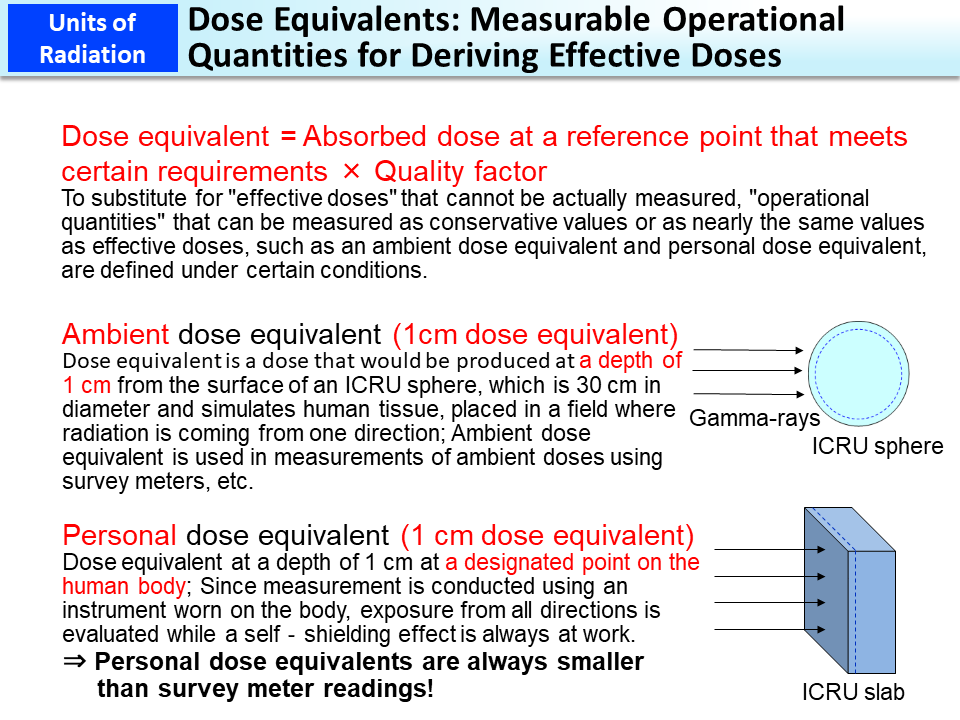Dose Equivalents: Measurable Operational Quantities for Deriving Effective Doses
Operational quantities for approximating effective doses that cannot be actually measured (p.40 of Vol. 1, “Concepts of Doses: Physical Quantities, Protection Quantities and Operational Quantities”) are defined, such as the ambient dose equivalent H*(d) (d is depth) for evaluating ambient doses in a work environment, etc., the personal dose equivalent Hp(d) for evaluating personal exposure, and the directional dose equivalent H' (d,α) (α is the angle of incidence) as a quantity for use when there is a need to evaluate the depth and directions of incidence as well, as in the case of exposure of the lens of the eye to β-particles or soft X-rays.
Generally, both the ambient dose equivalent and the personal dose equivalent are also called 1 cm dose equivalents because a depth of 1 cm is used in the case of exposure to γ-rays.
However, while the ambient dose equivalent is measured using measuring instruments that are less affected by directivity, such as a stationary ionization chamber and a survey meter, the personal dose equivalent is measured using a small personal dosimeter worn on the trunk of the body, so incidence from the back is evaluated while a self-shielding effect is always at work. Therefore, in the case of exposures only from the front direction, such as exposures in laboratories, the ambient dose equivalent and the personal dose equivalent are equal, but in the case of exposures from all directions, personal dose equivalents are always smaller than the values measured with a survey meter, etc. Calculation of an effective dose for incidence from all directions is made under the condition of “rotational irradiation” in which the human body is rotated, and the calculated value will be exactly the same as the personal dose equivalent. In other words, the calculated value will generally be larger than the effective dose.
- Included in this reference material on March 31, 2017
- Updated on March 31, 2021

